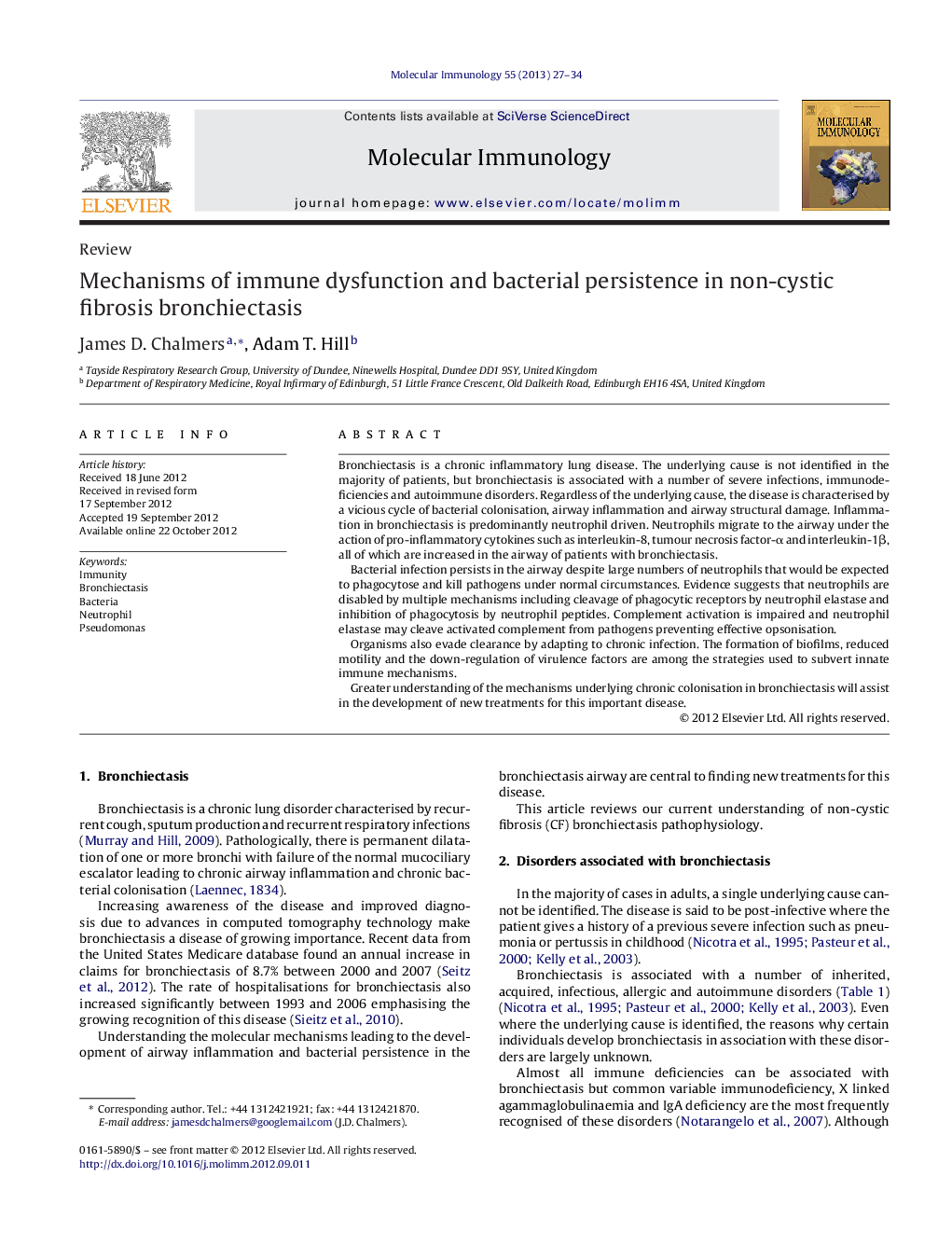| کد مقاله | کد نشریه | سال انتشار | مقاله انگلیسی | نسخه تمام متن |
|---|---|---|---|---|
| 2830900 | 1163771 | 2013 | 8 صفحه PDF | دانلود رایگان |

Bronchiectasis is a chronic inflammatory lung disease. The underlying cause is not identified in the majority of patients, but bronchiectasis is associated with a number of severe infections, immunodeficiencies and autoimmune disorders. Regardless of the underlying cause, the disease is characterised by a vicious cycle of bacterial colonisation, airway inflammation and airway structural damage. Inflammation in bronchiectasis is predominantly neutrophil driven. Neutrophils migrate to the airway under the action of pro-inflammatory cytokines such as interleukin-8, tumour necrosis factor-α and interleukin-1β, all of which are increased in the airway of patients with bronchiectasis.Bacterial infection persists in the airway despite large numbers of neutrophils that would be expected to phagocytose and kill pathogens under normal circumstances. Evidence suggests that neutrophils are disabled by multiple mechanisms including cleavage of phagocytic receptors by neutrophil elastase and inhibition of phagocytosis by neutrophil peptides. Complement activation is impaired and neutrophil elastase may cleave activated complement from pathogens preventing effective opsonisation.Organisms also evade clearance by adapting to chronic infection. The formation of biofilms, reduced motility and the down-regulation of virulence factors are among the strategies used to subvert innate immune mechanisms.Greater understanding of the mechanisms underlying chronic colonisation in bronchiectasis will assist in the development of new treatments for this important disease.
► Bronchiectasis is a chronic lung disease associated with a vicious cycle of bacterial infection and neutrophilic airway inflammation.
► This review focusses on the mechanisms leading to failed bacterial clearance in the airway.
► Neutrophils are the predominant cell in the airway and play a key role in disease pathogenesis.
► Neutrophil elastase is identified as a key mediator of neutrophil dysfunction, cleaving phagocytic receptors and opsonins.
► Emerging areas of study include the role of Th17 cells, macrophage clearance of apoptotic cells and the role of human neutrophil peptides.
Journal: Molecular Immunology - Volume 55, Issue 1, August 2013, Pages 27–34